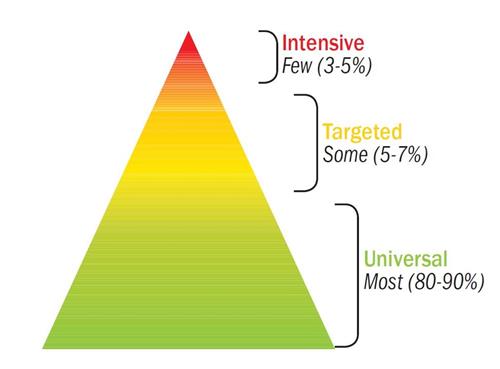- Anne Arundel County Public Schools
- What Is CDM?
Collaborative Decision Making
Page Navigation
-
How Does CDM Work?
Based on core principles of Professional Learning Com-munities, Response-to-Intervention, and No Child Left Behind, Collaborative Decision Making uses a multi-tiered approach to address the needs of all students:

Universal: AACPS implements core curriculum and programs with diagnostic and prescriptive teaching strategies to meet the needs of all learners. In addition, school-wide initiatives, such as Positive Behavior Interventions and supports, are employed with fidelity. These strategies reach 80-90% of our students.
Targeted: Based on screening data, individual students who are found to be non-responsive to universal interventions are selected to participate in evidence-based targeted interventions, specific to their identified needs. Approxmatily 5-7% of students fall into this category. Some students may require the development of an individu-alized Student Intervention Plan (StIP).
Intensive: When students do not make adequate progress through targeted strategies (approximatey 3-5% , the school's Multi-disciplinary Intervention Team (MIT) reviews the Student Intervention Plans to determine if the original StIPs were appropriate, if teachers have conducted interventions with fidelity, whether or not additional resources or support are needed to meet the needs of individual students, if decisions are grounded in data, and if a case manager is needed to provide teachers with addition-al support. The MIT also reviews school data to make sure that NO child is being left behind.
Data analysis is utilized throughout all levels of this continuum of support to ensure that students are successful.
Contacts
-
Holly Rodger
CDM Teacher Specialist
hrodger@aacps.org
410-266-3306Linda Bilbo
CDM Coach
lbilbo@aacps.org
410-266-3306

